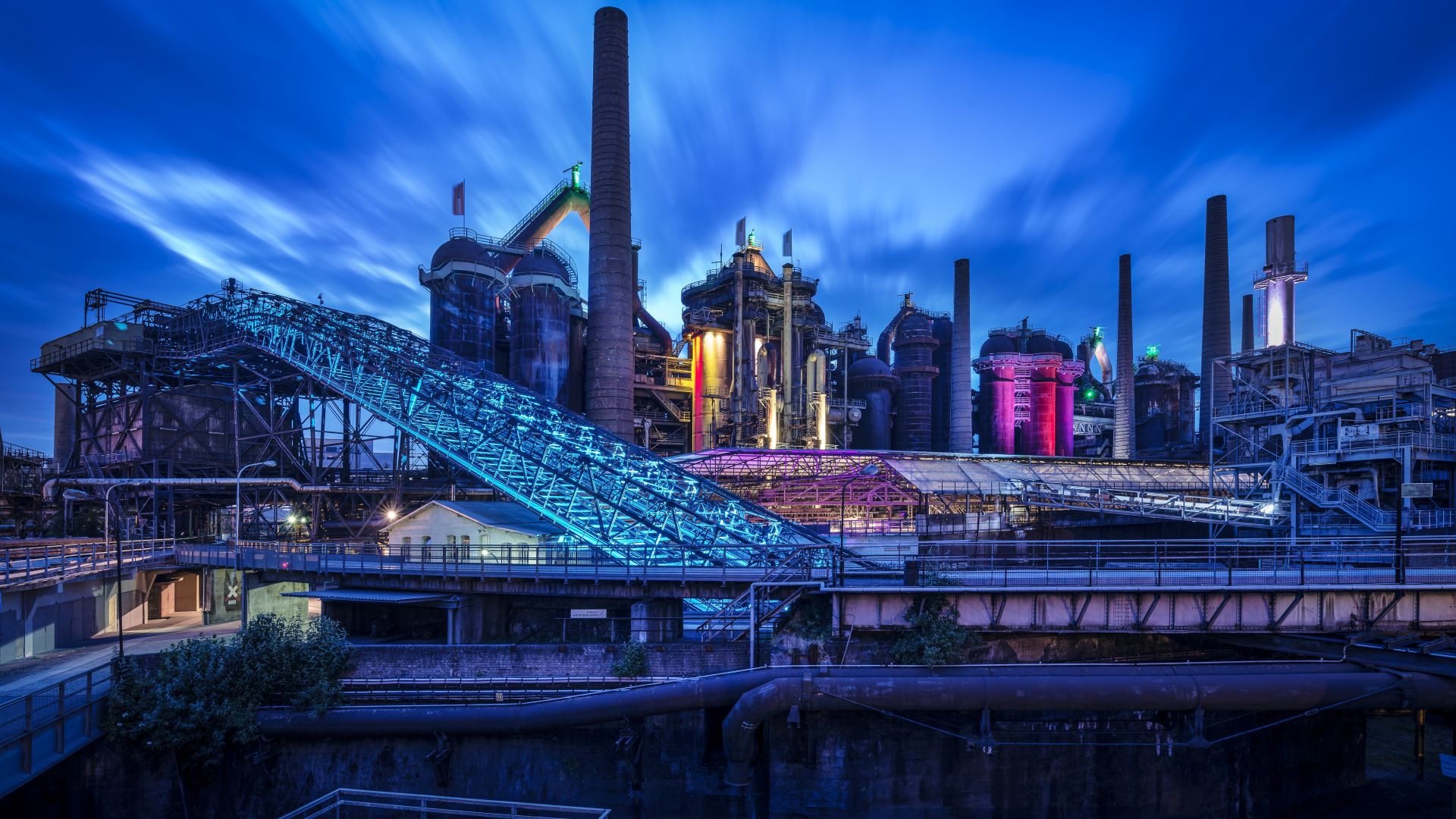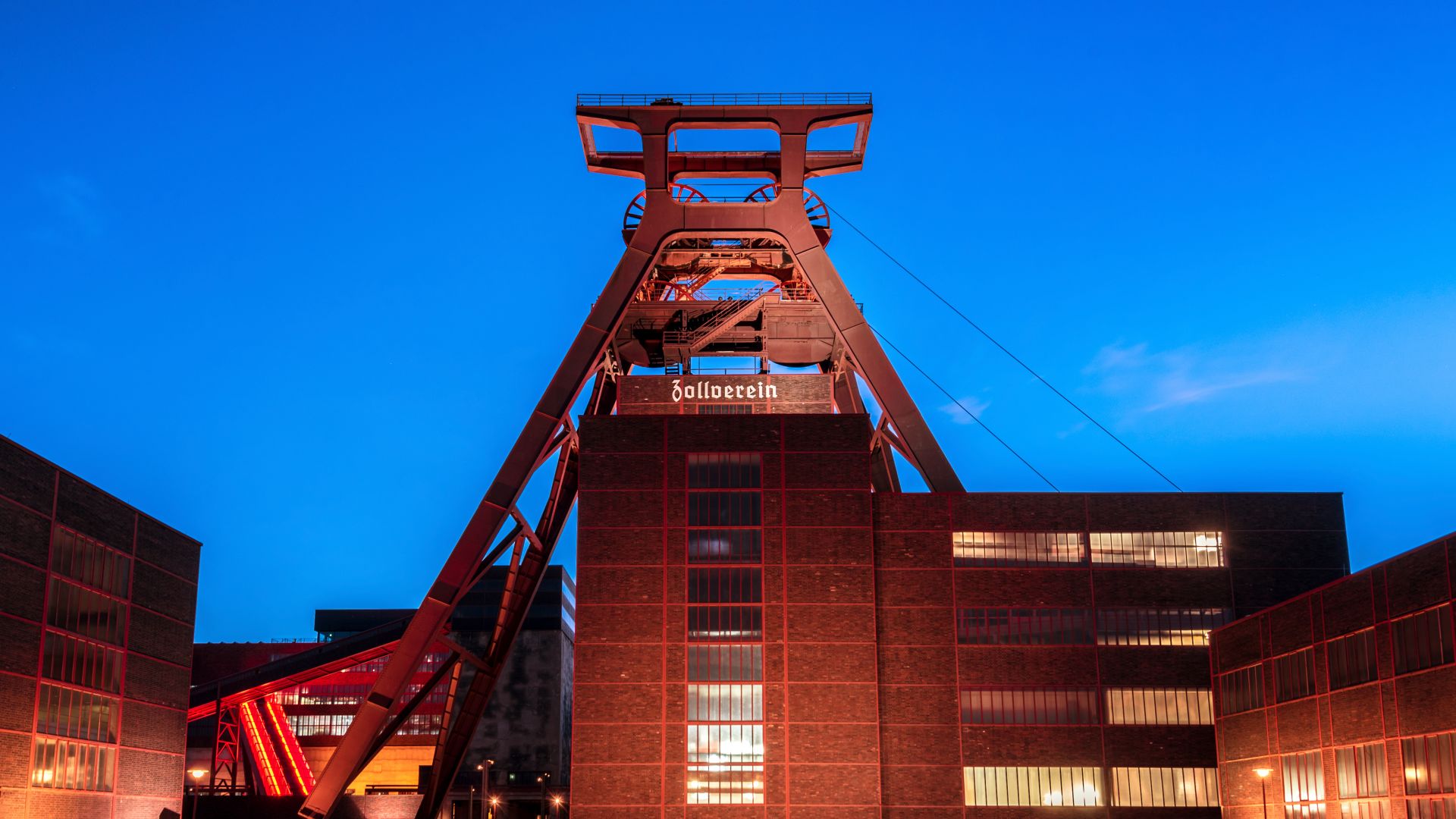Cities & Culture
Cities with industrial history: travel back in time to the 19th century
The industrial revolution changed many things in the 19th century, sometimes even the face of entire cities. And many industrial sites have undergone a fresh transformation again, after the end of coal and steel production, becoming instead leisure centres, art venues and museums.
Völklingen: extinguished blast furnaces, firing up culture
 UNESCO World Heritage Site Völklingen Ironworks
©Lookphotos (Günther Bayerl)
UNESCO World Heritage Site Völklingen Ironworks
©Lookphotos (Günther Bayerl)
17,000 people were employed by the Völklingen Ironworks at its peak six decades ago. Then suddenly, the end of an era. Perhaps that's not entirely accurate. After all, the sole wholly preserved ironworks in the world dating from the golden age of industrialisation has transformed into a leading cultural and tourist attraction. In a place where the air was still shimmering with heat 35 years ago, there are now classical music concerts and electro festivals, art exhibitions are held and street art professionals from all over the world are encouraged to express themselves, for example at the UrbanArtBiennale. The permanent highlights of the UNESCO World Heritage Site include a multimedia show in the old forge, the Ferrodrom, with around 100 experiential stations, as well as the climb up to the 27-metre-high blast furnace stage. From there, you can enjoy a first-class view of the "Paradise", a massive new landscaped garden, as well as of the charming Völklingen city centre on the other side of the Saar.
Dortmund, Essen and more: the changing Pott
 Essen: UNESCO world heritage site, Zollverein, Colliery gate
©banita.travel.pl (Anita Demianowicz)
Essen: UNESCO world heritage site, Zollverein, Colliery gate
©banita.travel.pl (Anita Demianowicz)
Go diving in the former gasometer, mountain biking on the slag heap or visit the open-air cinema at the foot of imposing blast furnaces. In the Ruhr region, which was shaped by coal and steel production for a long time like no other region in Europe, there is a great deal of creativity when it comes to transforming former industrial sites. Other areas, such as the Coal Mine Industrial Complex in Essen, the world's largest and most modern hard coal mining plant and a UNESCO World Heritage Site, have been completely preserved. Like the nearby Schurenbachhalde, the Bochum Jahrhunderthalle or the DASA Working World exhibition, it is located on the"Industrial Heritage Trail", linking top industrial monuments in the Potts region. Dortmund's Zollern Colliery, called the "Castle of Labour" thanks to its iconic machinery hall, is also on this route. Another hot tip is the Hansa coking plant in the Huckarde district, whose compressor hall and winding tower are illuminated in a strikingly different light during a torchlight tour.
Berlin: colourful, creative, cool
 Berlin: Gasometer in Berlin Schöneberg in the evening sun
©AdobeStock (thign)
Berlin: Gasometer in Berlin Schöneberg in the evening sun
©AdobeStock (thign)
In its almost 800-year history, Germany's capital has undergone many fundamental changes that have shaped the cityscape – explore the Prussian architecture, the building of the Wall, and the government quarter including the Reichstag. This metropolis on the River Spree experienced a particularly prosperous era around 1920, when "Greater Berlin" rose to become Europe's largest industrial city. Today this is no longer the case, but there is a charming new lease of life for former factories, industrial yards and industrial sites. Where welding and assembly used to take place, there are now start-ups, artists' studios, theatres and the like. Sometimes techno clubs and restaurants are also new tenants in these former transformer stations. Where beer was once brewed in the KulturBrauerei in the Prenzalauer Berg neighbourhood, there is now plenty of culture in a stunning setting. Another well-preserved monument to industrial architecture is the former AEG factory site there. The historical technical equipment and photographs on display in the Schöneweide industrial salon are genuinely captivating.
Chemnitz: always in fashion
 Chemnitz: Saxon Museum of Industry in the evening
©Chemnitzer Wirtschaftsförderungs- und Entwicklungsgesellschaft mbH (CWE) (Dirk Hanus)
Chemnitz: Saxon Museum of Industry in the evening
©Chemnitzer Wirtschaftsförderungs- und Entwicklungsgesellschaft mbH (CWE) (Dirk Hanus)
This town, on the northern edge of the Ore Mountains and in the Saxon triangle with Leipzig and Dresden, has long since been creating and producing. Mechanical engineering, engine production and especially the textile industry triggered a boom. In around 1850, there were around 150 factories in Chemnitz, nicknamed "Saxon Manchester". With this base, an enormous wealth of art collections and architecture developed, much of which, however, was destroyed in the Second World War. The next chapter in the city's history brought with it the hallmarks of a model socialist city: wide avenues, spacious squares, prefabricated buildings. Then came the (renewed) turning point: the name "Karl Marx City" disappeared, but not the Karl Marx Monument – at 2 x 13 metres high, this is the second largest portrait bust in the world. And south of Theaterplatz, which forms a enduring first-class architectural ensemble with the Opera House, the King Albert Museum and St Peter's Church, post-reunification buildings such as the Kaufhof glass palace created by Helmut Jahn followed suit. Its façade echoes the New Town Hall from 1911 as well as the Old Town Hall, which dates back to the Renaissance.